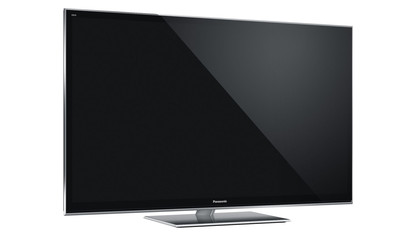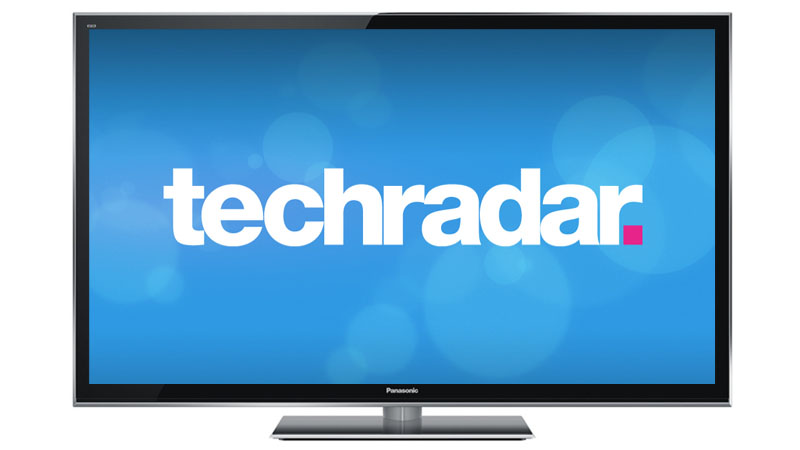Why you can trust TechRadar
So what is the Infinite Black Ultra filter in the Panasonic TX-P50VT50? It's all about contrast boosting - the bedrock of a good plasma picture - and, in this case, the lack of light.
Plasma panels are made up of cells that light up only when an electrical current is passed through; the Panasonic TX-P50VT50's success hinges on the use of a filter that blocks any external light from diluting the darkness that results from a cell not being lit while others around it are.
It's something LCD TVs can't do at all - they use a backlight that is always on - hence the birth of LED-backlighting, which essentially lessens those side-effects by using lots of little backlights.

It's not necessary to get into the engineering politics behind Panasonic's claim that the Panasonic TX-P50VT50 offers a 2,500Hz Focused Field drive.
But know that it ought to enable this plasma TV to show a far smoother, more fluid moving picture than any TV yet seen - and primarily that means 3D that's more comfortable to watch.
However, the Panasonic TX-P50VT50 isn't just for AV nerds. There are plenty of apps on Panasonic's VieraConnect smart TV interface, including catch-up TV via BBC iPlayer, and movie streaming services Netflix, Acetrax, YouTube, Daily Motion, Vimeo, Viera 3D World and FetchTV.

Social media in the form of Twitter and Facebook is present, as is a web browser.
Sign up for breaking news, reviews, opinion, top tech deals, and more.
News offerings include BBC News, Euronews and CNBC Real-Time, and live sport services include BBC Sport, MLB.tv and the new - though subscription-based - Eurosport Player app.
Music is catered for by TuneIn Radio, SHOUTcast radio, Aupeo and iConcerts apps.
Gaming apps include Brain trainer (£1.14), Apple Muncher (£1.14), Let's Golf (£3.44), Asphalt 5 (£3.44), Star Battalion (£3.44), Chess Challenge and Penalty Shootout.

Other apps include the excellent Rovi TV guide and Picasa. Happily, all are quick to load, shutdown and swap between by dint of a dual core Pro4 processor.
Tuners for both Freeview HD and Freesat HD are present, while four HDMI, an SDXC card slot and three USB slots should suffice for connecting other AV equipment.
We also counted composite video, component video and a single RGB Scart (all three use in-the-box adaptors) and a choice of audio outputs consisting of a headphones slot, some phonos and a digital optical audio port.

Powered by either wired LAN or Wi-Fi, the Panasonic TX-P50VT50 can stream myriad files - including, in our test, MOV, MP4, AVC HD and AVI video, JPEG photos and MP3 and FLAC music, from a PC, NAS drive or even a Mac (running UPnP software, such as TwonkyMedia).
Those who lament the lack of MKV support over a network will rejoice at the news that it is supported from a USB-connected flashdrive or HDD, as is the WMA music format.
Note that those USB slots - as well as the SDXC card slot - can also be used to make recordings from the Freeview tuner, though without a second tuner it's a case of 'watch one channel while you, err, record it.' Useful if you have to leave the house suddenly, but it's otherwise dreadfully limiting.

The Panasonic TX-P50VT50 also has a Bluetooth module that's primarily for use with 3D spectacles, though it also enables you to hook up a wireless keyboard or headphones.
There are two pairs of 3D glasses included in the box; additional pairs of the Panasonic TY-ER3D4ME specs can be purchased for around £50/AU$100/US$56 and, crucially, have worked with both Samsung and LG 3D TVs in our tests this year.
The last hardware offering is theoretically the most exciting; the touchpad remote, a 4.5-inch long, matt black plastic device that looks and feels like a disregarded prototype of a phone from the late 1990s.

Featuring a circular touch-sensitive (though not very) pad above, the more slender lower part contains volume and channel changer rockers alongside Menu and Back buttons, though frustratingly it's not always obvious how to use it to operate all of the TV's on-screen menus.
Thankfully there's also a traditional remote control included in the box, which emits red backlighting when the bulb-labelled button is pressed, lasting around 10 seconds; great news for those watching in a blackout, which is where this plasma TV truly belongs.


Jamie is a freelance tech, travel and space journalist based in the UK. He’s been writing regularly for Techradar since it was launched in 2008 and also writes regularly for Forbes, The Telegraph, the South China Morning Post, Sky & Telescope and the Sky At Night magazine as well as other Future titles T3, Digital Camera World, All About Space and Space.com. He also edits two of his own websites, TravGear.com and WhenIsTheNextEclipse.com that reflect his obsession with travel gear and solar eclipse travel. He is the author of A Stargazing Program For Beginners (Springer, 2015),
